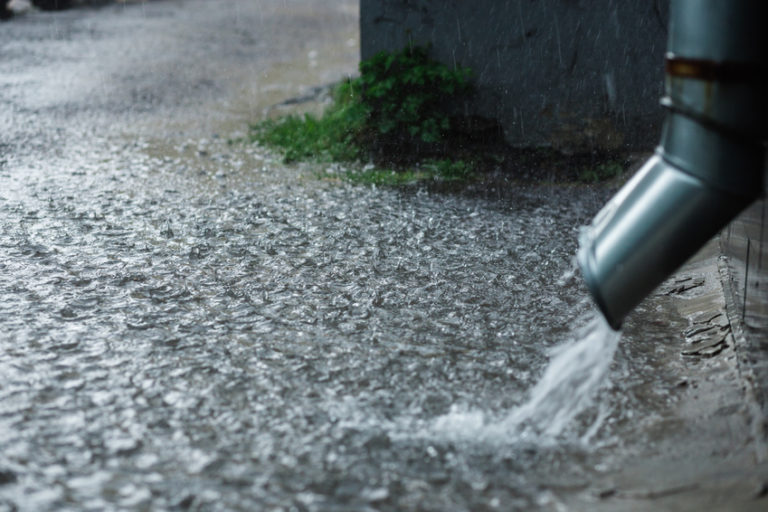

Gutters overflowing during rain can lead to significant property damage. Understanding the causes of this common issue and effective cleaning and repair strategies is key to protecting your home. This comprehensive guide examines various approaches to resolve gutter overflowing problems, ensuring the structural integrity of your home and preventing costly repairs. This article outlines causes, prevention techniques, and repair strategies to effectively deal with this frequent problem. We’ll delve into different types of gutters, the common causes of overflow, and actionable steps for cleaning and repairing them.
Understanding the Problem of Overflowing Gutters
Overflowing gutters during heavy rain is a common homeowner concern. Water damage can result from neglected gutters, causing significant property damage to the exterior and interior of your house. Prompt action is key to preventing lasting damage. A thorough understanding of gutter systems and the common causes of overflow is the first step towards effective repair and prevention. Overflowing gutters don’t just affect aesthetics, they lead to foundation problems, rotting fascia boards and siding, and even the development of mold and mildew. It’s not just an inconvenience; it’s a potential problem requiring careful attention.
Identifying the Culprits: Common Causes of Overflow
Clogged Gutters:
Related Post : Roof Leaks Developing After Storms? How to Identify and Repair Quickly
Leaves, twigs, debris, and other organic matter accumulate in gutters, obstructing proper water flow. This is the most prevalent cause. During periods of heavy rainfall, water buildup quickly overwhelms the system’s capacity, leading to overflow. Regular gutter cleaning is essential for preventing clogs. Homes in areas with abundant tree cover or substantial leaf fall will experience this more frequently.
Improperly Installed Gutters:
Incorrectly installed gutters or downspouts can lead to drainage issues. A misaligned downspout can direct water away from the house and into landscaping, but an insufficient downspout can also be a problem. Slope issues can result in the accumulation of water and overflow, as well. Hire a professional if you suspect installation flaws.
Improper Gutter Size:
Gutters that are too small for the roof’s surface area can’t accommodate the volume of water during heavy storms. An inadequate gutter system won’t adequately cope with the amount of rain falling on your roof, resulting in overflow.
Cleaning Strategies for Overflow Prevention
Regular Cleaning Schedule:
Establishing a regular cleaning schedule is critical in preventing clogs. This usually involves a spring and fall cleaning routine. Autumn cleaning is especially important after the leaf fall season. This will ensure the smooth flow of water away from your property. A simple inspection and maintenance strategy can significantly reduce your likelihood of overflow problems. Regularly check for clogs to avoid major issues.
Effective Cleaning Tools:
Various tools can aid in gutter cleaning, from simple hand tools to specialized equipment. Use appropriate tools to effectively remove debris without causing damage to your gutters. A ladder, strong gloves, and a scoop or gutter cleaning brush are all helpful tools. A garden hose can be helpful for flushing out any loose debris.
Professional Gutter Cleaning Services:
For complex issues or extensive gutter systems, professional gutter cleaning services might be necessary. A professional cleaning can handle the task more efficiently and effectively, especially if your gutters are difficult to access or require special tools for cleaning. If you have multiple levels or hard to reach areas, consider hiring a professional.
Repair Strategies for Lasting Solutions
Replacing Damaged Gutters:
Damaged or worn-out gutters need immediate replacement. Leaks, holes, and warping can compromise the system’s integrity, leading to water damage. Inspect your gutters for any damage before the next rain. Timely repairs can avoid potential problems. Determine the extent of the damage and select appropriate materials for repair or replacement.
Downspout Management for Proper Drainage
Ensuring Correct Downspout Placement:
Downspouts should be correctly positioned to direct water away from the foundation and into the landscape. Water should be directed far enough away from the house’s foundation to prevent water from accumulating around the base. Efficient drainage from the gutters helps prevent water damage and maintain a healthy landscaping environment.
Extending Downspouts:
Consider extending downspouts to redirect water away from the house’s foundation, reducing the risk of water damage to the exterior and interior of your home. This can often be an inexpensive solution compared to replacing the gutter system entirely. Proper downspout placement ensures that water flows away from your house, preventing water from pooling at the base.
In conclusion, gutters overflowing during rain can cause significant property damage if not addressed promptly. Understanding the various causes and implementing effective cleaning and repair strategies is crucial for homeowners. By regularly inspecting your gutters, addressing clogs, and performing repairs as needed, you can protect your home from water damage and maintain its structural integrity. For further assistance or detailed guidance on gutter maintenance, consult a professional. Don’t hesitate to contact a local gutter cleaning and repair service for a comprehensive solution.